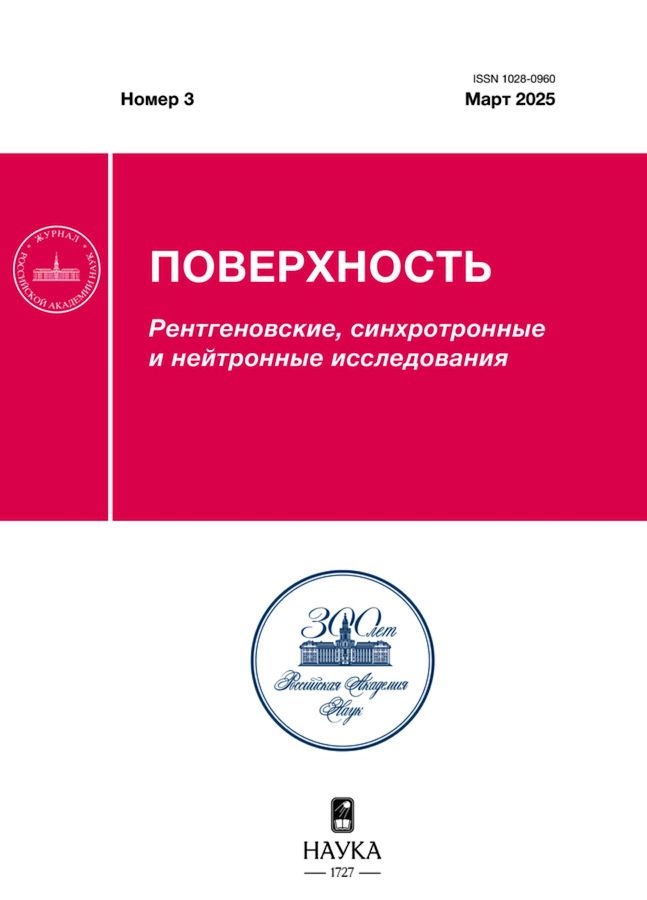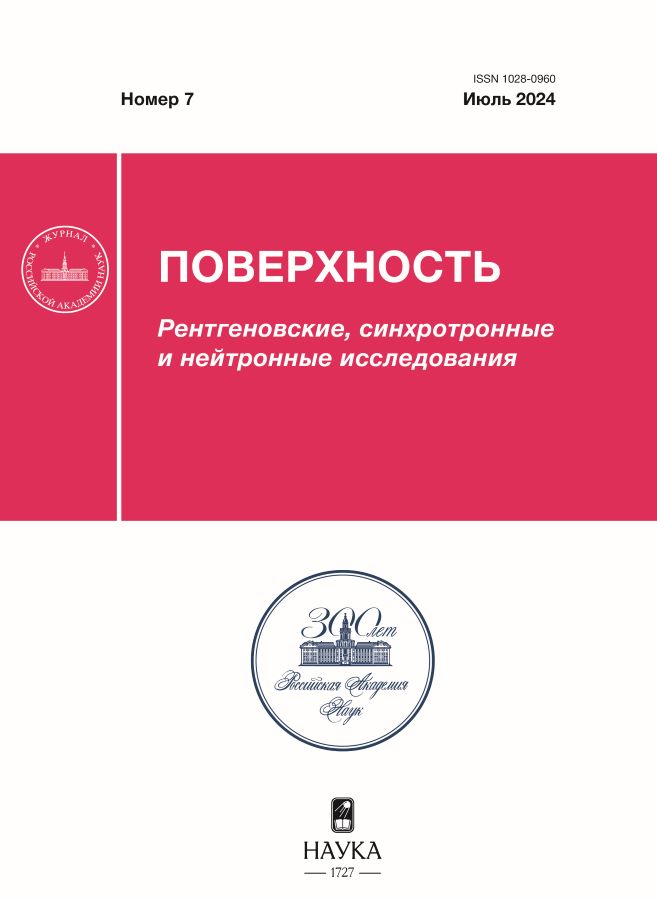Температурная зависимость структурных параметров тонких пленок нанокомпозита полистирол—фуллерен С60/С70 по данным нейтронной рефлектометрии
- Авторы: Тропин Т.В.1, Авдеев М.В.1, Аксенов В.Л.1
-
Учреждения:
- Объединенный институт ядерных исследований
- Выпуск: № 7 (2024)
- Страницы: 3-8
- Раздел: Статьи
- URL: https://kld-journal.fedlab.ru/1028-0960/article/view/664787
- DOI: https://doi.org/10.31857/S1028096024070019
- EDN: https://elibrary.ru/EVWZOK
- ID: 664787
Цитировать
Полный текст
Аннотация
Методом нейтронной рефлектометрии зеркального отражения в диапазоне 15–150°C исследованы температурные зависимости структурных параметров тонких пленок нанокомпозитов полистирол-фуллерен С60/С70 с низким содержанием наночастиц в окрестности температуры стеклования полимерной матрицы. Полученные зависимости толщин пленок от температуры использованы для оценки температуры стеклования пленочных композитов. В случае пленок c фуллереном С60 зависимость имеет стандартный вид. Температура стеклования композитной пленки понижается в сравнении с известным значением для чистого объемного полимера. В случае пленок c фуллереном С70 при переходе к большим температурам наблюдается немонотонная зависимость толщины пленки, затрудняющая применение общего подхода.
Ключевые слова
Полный текст
Об авторах
Т. В. Тропин
Объединенный институт ядерных исследований
Email: avd@nf.jinr.ru
Лаборатория нейтронной физики им. И.М. Франка
Россия, ДубнаМ. В. Авдеев
Объединенный институт ядерных исследований
Email: avd@nf.jinr.ru
Лаборатория нейтронной физики им. И.М. Франка
Россия, ДубнаВ. Л. Аксенов
Объединенный институт ядерных исследований
Автор, ответственный за переписку.
Email: avd@nf.jinr.ru
Лаборатория нейтронной физики им. И.М. Франка
Россия, ДубнаСписок литературы
- Anandhan S., Bandyopadhyay S. // Nanocomposites Polymers with Analytical Methods / Ed. Cuppoletti J. Rijeka: IntechOpen, 2011. Р. 3. https://doi.org/10.5772/17039
- Barnes K.A., Karim A., Douglas J.F., Nakatani A.I., Gruell H., Amis E.J. // Macromolecules. 2000. V. 33. P. 4177. https://doi.org/10.1021/ma990614s
- Wang C., Guo Z.X., Fu S., Wu W., Zhu D. // Prog. Polym. Sci. 2004. V. 29. P. 1079.
- Russell T.P., Chai Y. // Macromolecules. 2017. V. 50. P. 4597. https://doi.org/10.1016/j.progpolymsci.2004.08.001
- Krishnan R.S., Mackay M.E., Duxbury P.M., Hawker C.J., Asokan S., Wong M.S., Goyette R., Thiyagarajan P. // J. Phys. Condens. Matter. 2007. V. 19. Р. 356003. https://doi.org/10.1088/0953-8984/19/35/356003
- Mackay M.E., Tuteja A., Duxbury P.M., Hawker C.J., Van Horn B., Guan Z., Chen G., Krishnan R.S. // Science. 2006. V. 311. P. 1740. https://doi.org/10.1126/science.1122225
- Holmes M.A., Mackay M.E., Giunta R.K. // J. Nanoparticle Res. 2007. V. 9. P. 753. https://doi.org/10.1007/s11051-006-9118-1
- Karpets M.L., Tropin T.V., Bulavin L.A., Schmelzer J.W.P. // Nucl. Phys. At. En. 2018. V. 19. P. 376.
- Tropin T.V., Karpets M.L., Kosiachkin Y., Aksenov V.L. // J. Surf. Invest.: X-Ray Synchrotron Neutron Tech. 2021. V. 15. P. 768. https://doi.org/10.1134/S1027451021040224
- Tropin T.V., Karpets M.L., Kosiachkin Y. et al. // Fullerenes, Nanotub. Carbon Nanostructures. 2021. V. 29. P. 819. https://doi.org/10.1080/1536383X.2021.1901276
- Yaklin M.A., Duxbury P.M., Mackay M.E. // Soft Matter. 2008. V. 4. P. 2441. https://doi.org/10.1039/B807565D
- Авдеев М.В., Боднарчук В.И., Петренко В.И., Гапон И.В., Томчук А.В., Нагорный А.В., Ульянов В.А., Булавин Л.А., Аксенов В.Л. // Кристаллография. 2017. Т. 62. С. 1014. https://doi.org/10.7868/S0023476117060029
- Nelson A. // J. Appl. Crystallogr. 2006. V. 39. P. 273. https://doi.org/10.1107/S0021889806005073
- Kim J.H., Jang K.L., Ahn K., Yoon T, Lee T.-I., Kim T.-S. // Sci. Rep. 2019. V. 9. P. 1. https://doi.org/10.1038/s41598-019-43592-x
- Keddie J.L., Jones R.A.L., Cory R.A. // Europhys. Lett. 1994. V. 27. P. 59. https://doi.org/10.1209/0295-5075/27/1/011
- Forrest J.A., Dalnoki-Veress K., Stevens J.R., Dutcher J.R. // Phys. Rev. Lett. 1996. V. 77. P. 2002. https://doi.org/10.1103/PhysRevLett.77.2002
- Sanz A., Wong H.C., Nedoma J.A., Douglas J.F., Cabral J.T. // Polymer. 2015. V. 68. P. 47. https://doi.org/10.1016/j.polymer.2015.05.001
- Kropka J.M., Sakal V.G., Green P.F. // Nano Lett. 2008. V. 8. P. 1061. https://doi.org/10.1021/nl072980s
- Wong H.C., Cabral J.T. // J. Phys.: Conf. Ser. 2010. V. 247. P. 12046. https://doi.org/10.1088/1742-6596/247/1/012046
Дополнительные файлы















